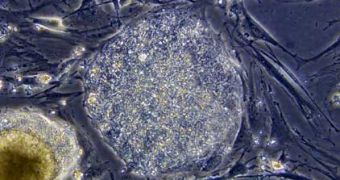The interruption of stem cells' natural bio-electric flow has been linked to the appearance of cancerous cells in frog embryonic stem cells, researchers at the Forsyth Institute say. When the electrical mechanism was influenced, stem cells mutated and evolved like cancer, changing their shape and size, and quickly invading all major organs in the amphibian. Michael Levin, Ph.D., director at the Forsyth Center for Regenerative and Developmental Biology, said that electrical current may prove to be a yet unexplored means of controlling cell behavior and growth patterns.
A potassium channel, dubbed KCNQ1, is largely responsible for human diseases such as Romano-Ward and Jervell-Lange-Nielsen syndromes, which are transmitted genetically. The same channel was targeted in this experiment, as scientists uncovered that by interrupting the flow of potassium running through it, some pigment stem cells in the frog spiraled out of control, invading blood vessels, the heart and the neural tube – a form of central nervous systems found in amphibians – ultimately leading to a hyper-pigmented tadpole.
As a result of the research, potassium is now known to play a significant role in both stem and cancerous cells, which seems to point to the fact that, by identifying the correct channels through which it flows into the cell, and manipulating them with bio-electric current, the stem cells could be "tamed" and controlled in a way that could prevent them from mutating. The discovery was published on October 13th, in the Proceedings of the National Academy of Sciences.
Scientists at Tufts and Tuebingen Universities also contributed to this research. They say that regenerative medicine could benefit a great deal from these findings, especially in the area of cancer prevention and treatment. "This research is especially exciting because it shows the importance of electrical signals for changing cell behavior, identifies a new role in developmental and cell biology for the KCNQ1 ion channel, and strengthens the link between stem cells and tumor cells," said Junji Morokuma, Ph.D., who was also a member of the research team.

 14 DAY TRIAL //
14 DAY TRIAL //